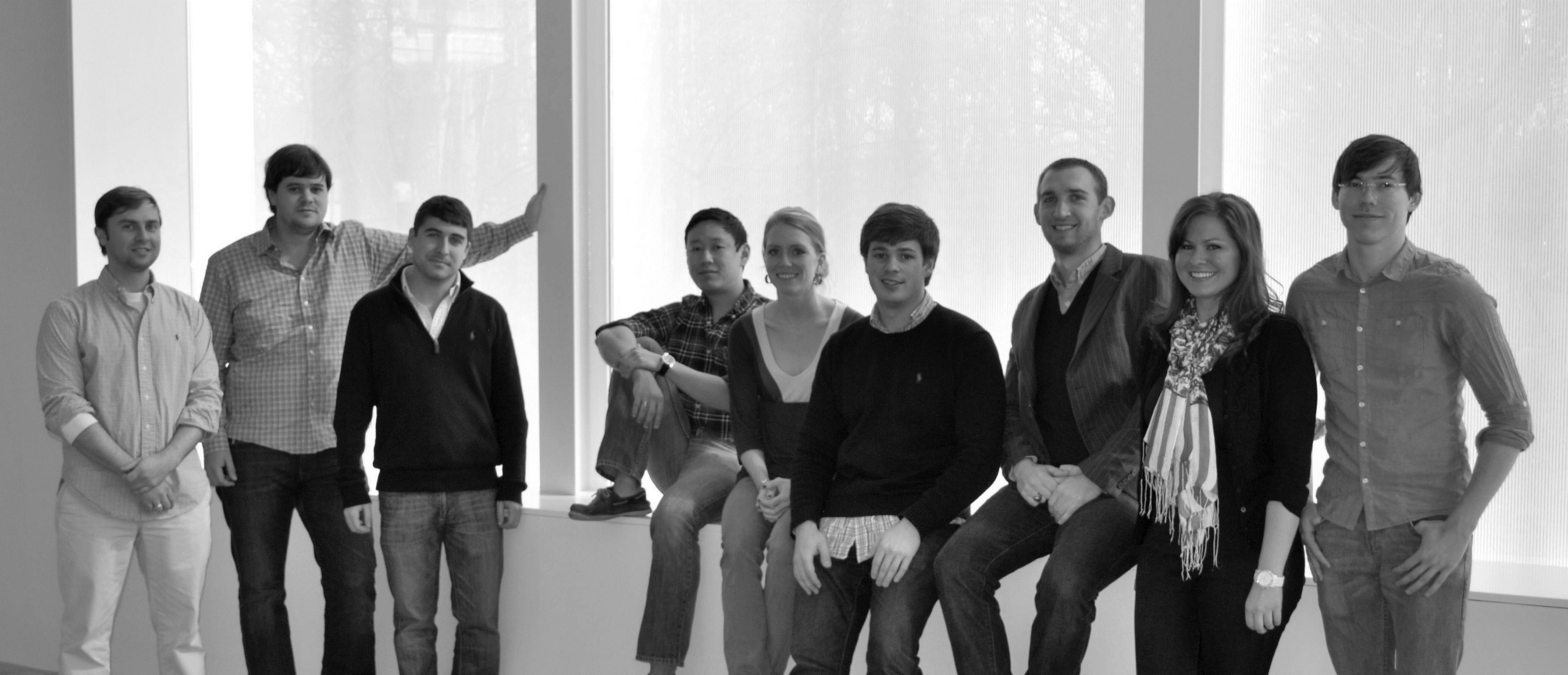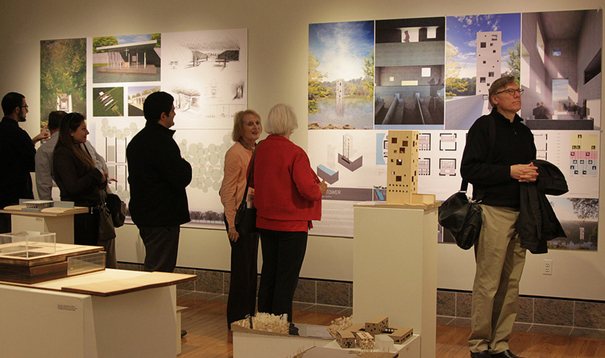University of Southern California
Adjunct Associate Professor, Gerdo Aquino, is President of SWA, and Principal at the Los Angeles studio. Aquino was recently recognized as a Fellow with the American Society of Landscape Architects and was recently awarded the Southern California Chapter ASLA Merit Award for the Anning River project in Panzhihua, China and an ASLA National Honor Award for the book Landscape Infrastructure: Case Studies by SWA which he co-authored. He is currently working on one of the largest mixed used projects in Cairo, Egypt, and the Samsung Headquarters in San Jose, California.
Diane Ghirardo‘s new book, Italy. Modern Architectures in Context, has just been published by Reaktion Press in London and Chicago.
With the addition of a high resolution laser and camera scanner Alexander Robinson continues to expand and develop the technological capabilities of his Landscape Morphologies Lab. This technology will allow for the real time analysis and projection of forms generated with the lab’s robotic modeling of landscapes with sand and other mediums.
Peter Simmonds was in Shenzhen, China with Thom Mayne of Morphosis presenting the Morphosis design for the Hanking Tower Competition which they won, beating some serious competition for this 360m high tower. Simmonds also presented at the faculty Pecca Kucha offering an Engineering perspective of Architecture. He also gave a seminar on designing comfortable spaces at the Southern California ASHRAE technical seminar in Downey.
Ed Woll (Tomko Woll Group Architects Inc) has attended openings for three recently-completed residential developments in the past two months: Young Burlington apartments near Koreaown, Joveness Houses in East LA and Jill’s Place (permanent supportive housing for formerly homeless women in downtown LA.) These projects were done in collaboration with USCArch alumna Ena Dubnoff. In the works are renovation of an existing pool and parking garage for a condominium complex in West LA’s “Million Dollar Mile” and a new housing development for seniors and homeless veterans in Eagle Rock.
Adjunct Professor Veronica G. Galen successfully passed the Lighting Certificate exam and was the lighting designer for various projects that received awards from the AIA/California Council. She has also accepted a position as Secretary of the Illuminating Engineering Society, Los Angeles Chapter (IESLA).
Lecturer Ying-Yu Hung is Managing Principal of SWA Los Angeles, and co-founder of the Infrastructure Research Initiative (I.R.I.S.). Hung was recently awarded an ASLA National Honor Award and a Southern California Chapter ASLA Honor Award for the book Landscape Infrastructure: Case Studies by SWA which she co-authored. She also received a Southern California Chapter ASLA Award of Excellence for Gubei Pedestrian Promenade. This project is coincidently featured in the December 2012 issue of Landscape Architecture Magazine. She recently won the Pudong Waterfront competition in Shanghai, China, a development of mixed use, open space and a sculpture park along the Huangpu River. Hung is currently working on international and local projects which include the Fuyang Urban River Design, a mixed use development project along a riverfront in Fuyang, China and the recently awarded Highland Park Streetscape in Los Angeles, California.
David Lawrence Gray architects has completed design work for a 92 unit adaptive reuse building at 1111 sunset blvd in downtown Los Angeles. The 50 year old building was designed by William Pereira. The architects have added two stories to the existing top floor. Construction began on December 1 2012.
Adjunct Professor of Architecture Lorcan O’Herlihy has received several accolades in 2012, including a Cooper-Hewitt National Design Award nomination, 5 AIA awards, and Interior Design’s Best of Year Award. Lorcan’s design work will be on view Spring 2013 at the MOCA exhibition, A New Sculpturalism, as well as A+D Museum’s Never Built: Los Angeles.
Erik Mar recently completed the 7200 sf East Rancho Dominguez Library, in Compton, CA. It is the first LEED Platinum rated building owned and operated by the County of Los Angeles.
John V. Mutlow, FAIA, Professor of Architecture, was honored by the AIA California Council with a ‘Presidential Citation’ for his service to the profession as Chairman of the AIA Los Angeles Chapter’s Fellows Committee. Professor Mutlow has also won the 2012 Professional Builder magazine Platinum Award for Stovall Villa. He received the Los Angeles Architectural Award for “Housing, Multi-Family” from the Los Angeles Business council for Stovall Villa, a 32 unit affordable senior housing complex in Los Angeles. Professor Mutlow, in partnership with Tighe Architecture, Inc., received a 2012 Westside Prize from the Westside Urban Forum for The Courtyard at La Brea, a mixed-use affordable housing community for seniors, emancipated youths, and persons with special needs in West Hollywood, CA. Professor Mutlow’s firm, John V. Mutlow Architects, Inc., focuses on affordable housing for the elderly, families and persons with special needs.
Warren Techentin was recently awarded two AIA, NEXT/LA awards for his work.
Adjunct Assistant Professor Mario Cipresso AIA has been named one of the “Top 20 Under 40” for 2013 by Engineering News Record California. The award celebrates the excellence of young design and construction professionals who have made significant contributions to the profession at an early stage in their careers. A feature will be published in the February issue of ENR California.
Lecturer Brian Tichenor has written the introduction for, and contributed to ‘California Casa’ (Rizzoli 2012). His work is featured in the January 2013 edition of Architectural Digest, and in ‘Kelly Wearstler: Rhapsody’ (Rizzoli 2012). His firm, Tichenor and Thorp Architects, is currently bringing to completion a six acre Creative Technology Campus in Culver City, integrating three buildings, interiors, and Landscape Architecture.
“Professors Kyle Konis, Karen Kensek, Joon-ho Choi and Anders Carlson, recently received an award of $15,000 from NCARB to implement their proposal “Performance as a Design Driver: Creating a Framework to Integrate Practitioner Knowledge in the Design Studio.”
Emily Gabel-Luddy, FASLA, instructor for ARCH 536, was elected Vice Mayor of the City of Burbank for 2012-13. This year she presented at the California State Trails Conference, addressing the development and implementation of urban trails, tracing their history in Los Angeles’ neighborhoods.
Professor Schierle’s book Structure and Design is posted on more than 30 websites. Examples:
http://www.abebooks.co.uk/book-search/author/g-g-schierle/
http://www.bookrenter.com/g-g-schierle/textbooks-by
http://www.goodreads.com/author/show/3310564.G_G_Schierle
http://www.barnesandnoble.com/w/structure-and-design-g-g-schierle/1015116000
http://www.curee.org/publications/book-1934269379.html
http://www.infibeam.com/Books/search?author=G%20G%20Schierle
http://www.amazon.co.uk/s?_encoding=UTF8&search-alias=books-uk&field-author=G.%20G.%20Schierle
http://www.thenile.com.au/books/GG-Schierle/Structure-and-Design/9781934269374/
http://www.bizrate.com/architecture-books/978868081.html

 Study Architecture
Study Architecture  ProPEL
ProPEL 


